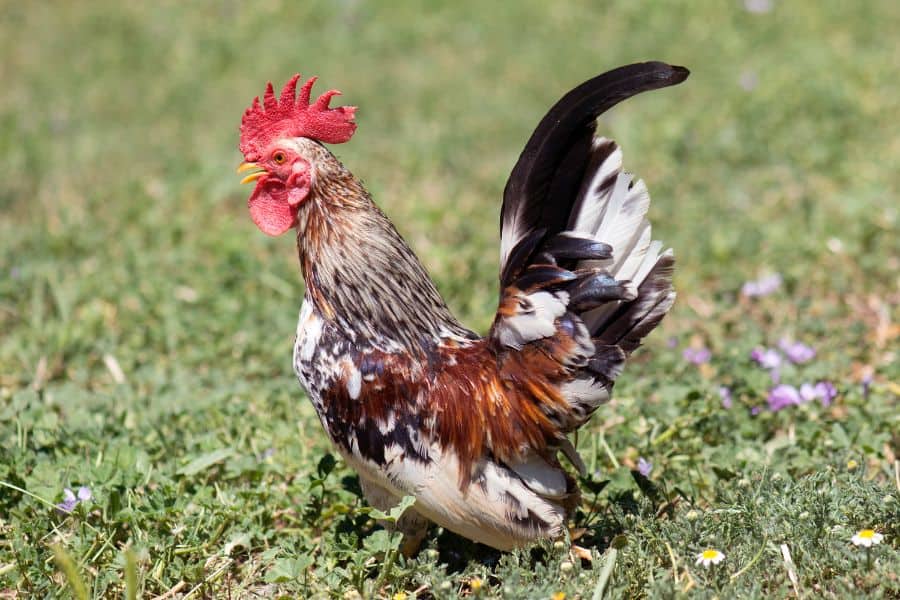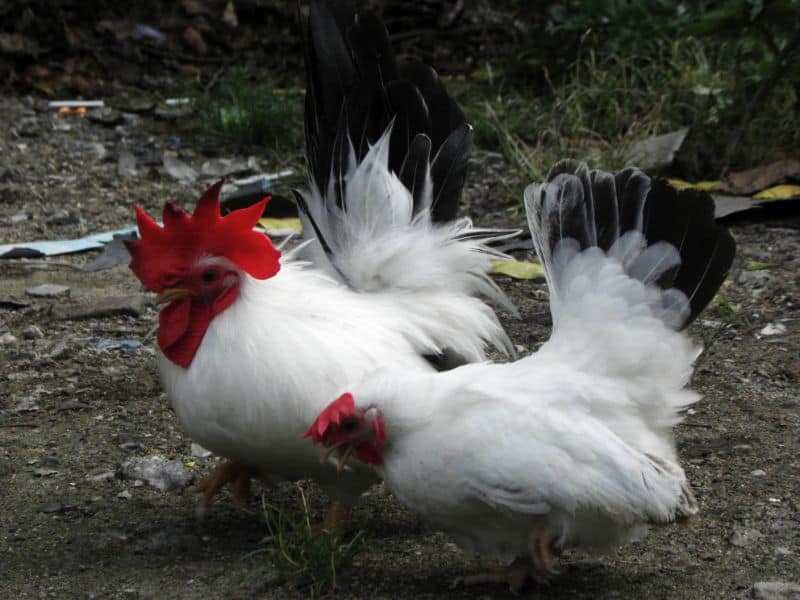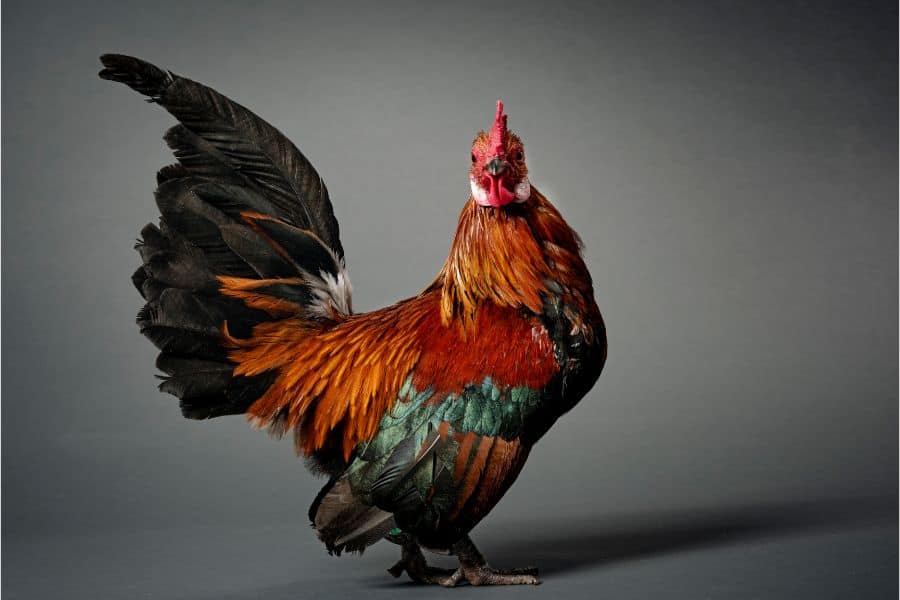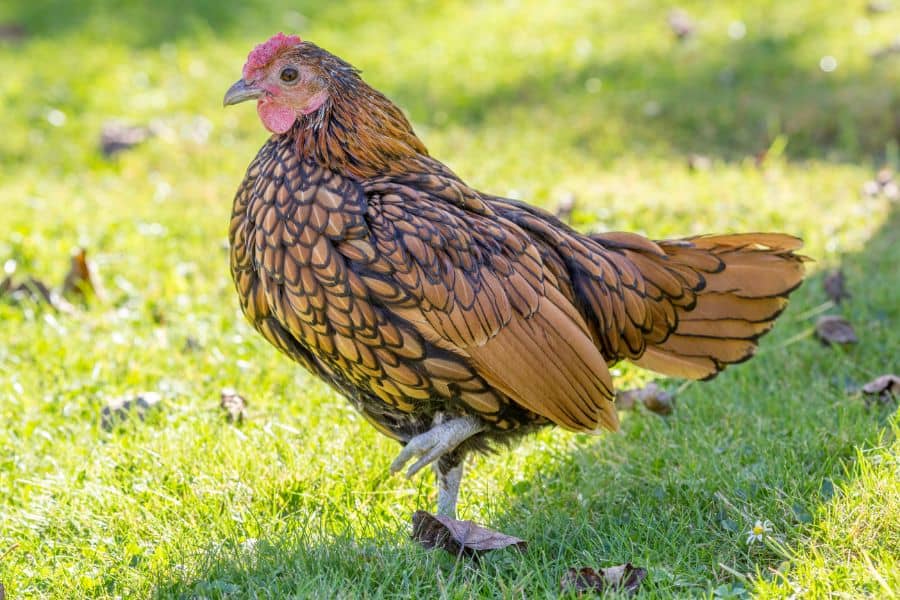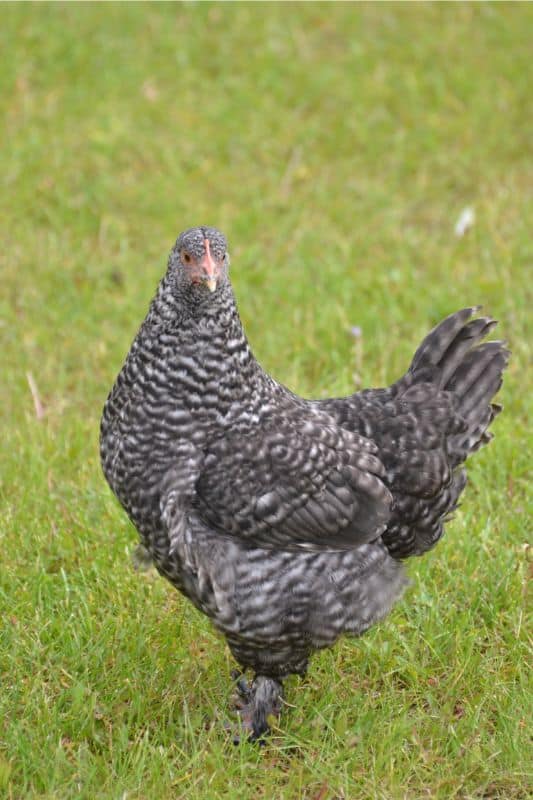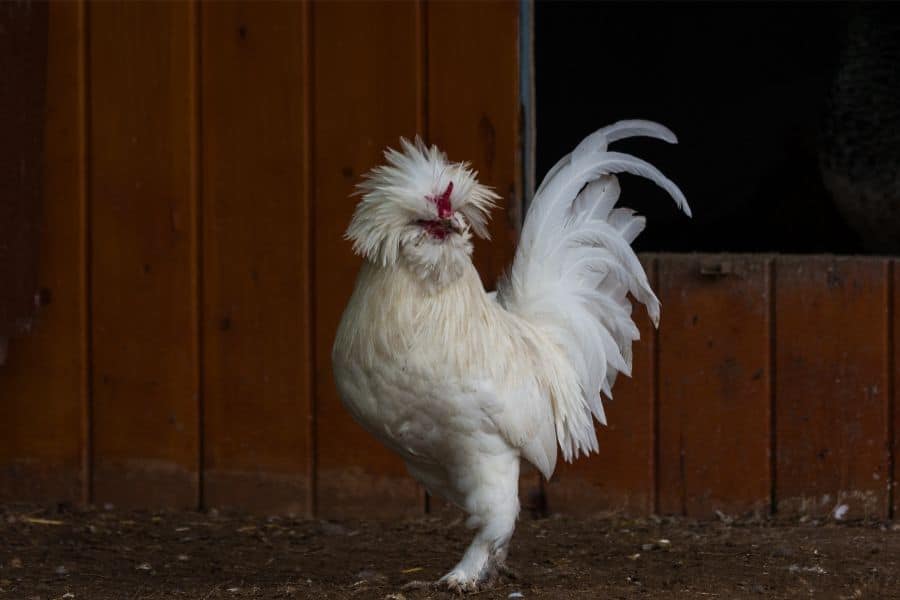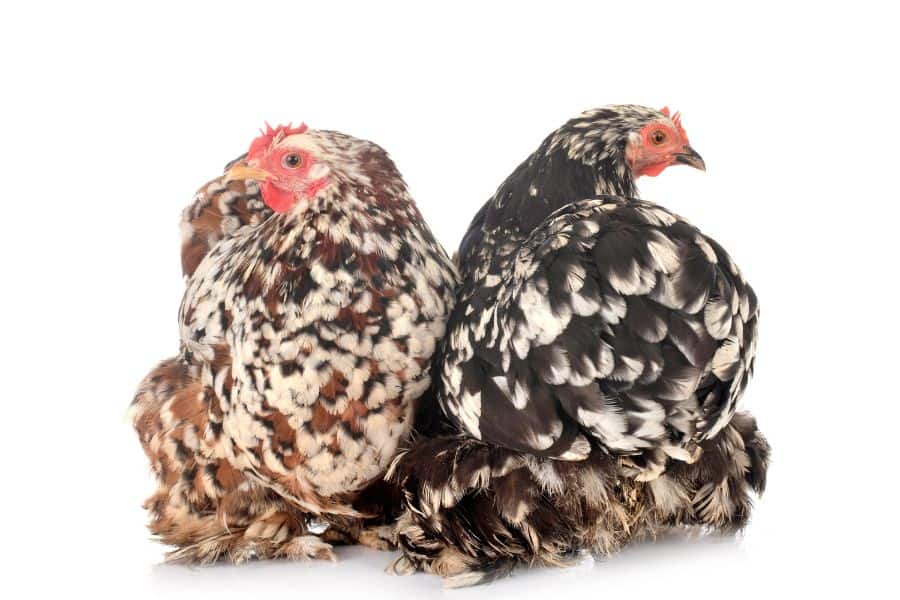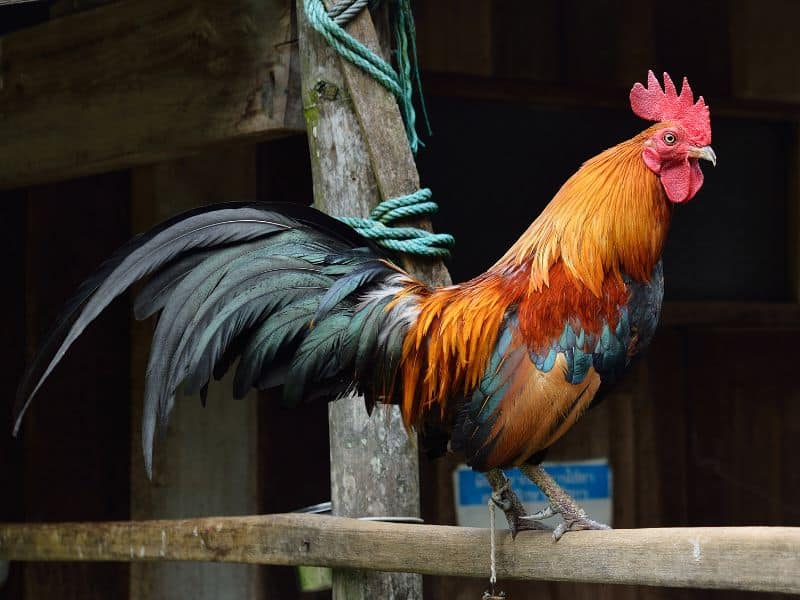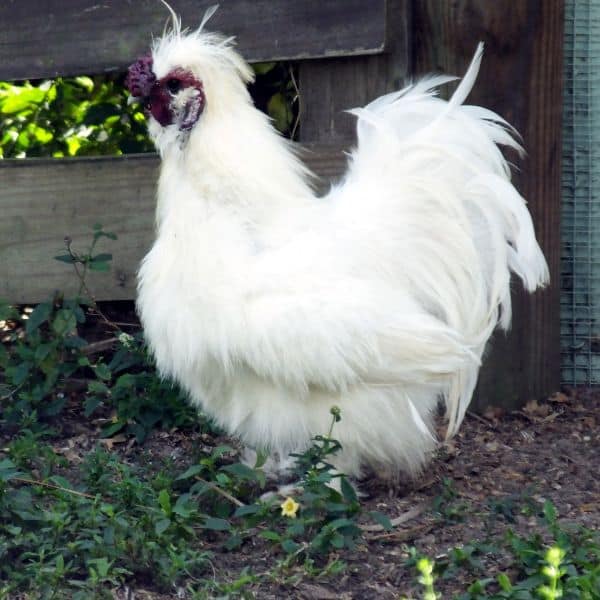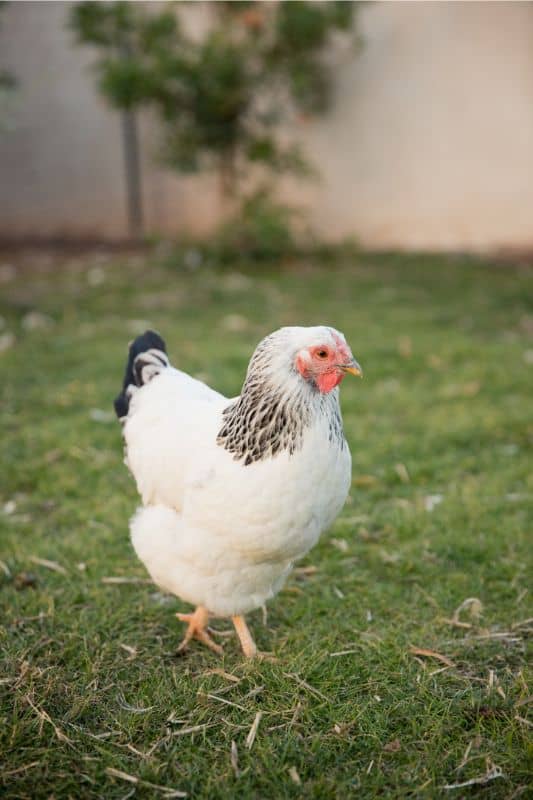Owning a small chicken breed isn’t just fun – it’s a clever way to add charm and personality to your backyard.
Plus, the tiny chicken breeds have minimal space and food requirements, making them a more economical option.
Of course, it doesn’t end there, as there are more perks that you’ll get to enjoy by parenting the pint-sized feathered friends.
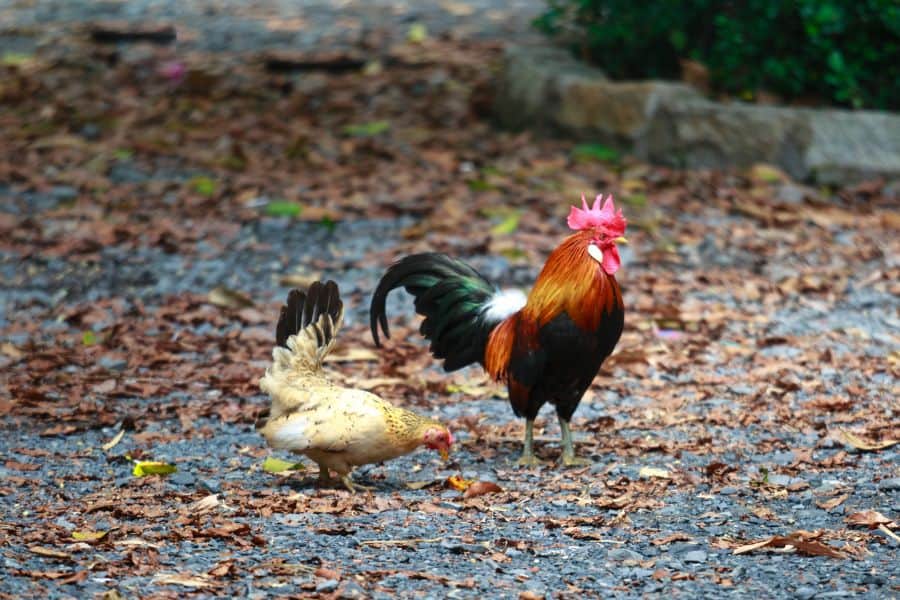
But then, what are some of these breeds?
Well, that’s why we’re here.
In this blog post, we’ll disclose some of the world’s smallest chicken breeds. Our cherry-picked selections aren’t just petite; they’re cute and sweet to have around, to say the least!
Let’s dive right in!
15 Smallest Chicken Breeds
While there’s no problem in having giant, beefy chicken breeds, sometimes we lack the capacity needed to make them happy and their life more wonderful.
That’s where the tiny chicken breeds come in.
Our tiny feathered selections are generally easier to raise and adorable. And by the way, even with their little bodies, don’t underestimate them – most of these chicken breeds have personalities larger than life.
Let’s dive into the nitty-gritty!
1. Serama Bantams
- Weight: 0.5 to 1.2 pounds
- Height: 6 to 10 inches
- Eggs per year: 180 to 200
If you want nothing but the tiniest chicken breed out there, go for the Malaysian Serama Bantam. It is the smallest chicken breed there is.
Imagine having a chicken breed that stands 6 inches tall and weighs a maximum of 1.2 pounds when fully grown!
That’s precisely what you get with the Serama Bantam chicken breed.
But be careful when choosing the size, as Seramas aren’t original bantams. That’s to say; there are larger strains of Serama chickens that can weigh much more than you’d probably like.
Expect your Serama Bantam to give you up to 4 eggs per week. That’s approximately 180 to 200 eggs per year, which is an impressive count!
On top of that, these birds are weather-hardy and can tolerate cold and hot climates alike. But keep them away from muddy and wet environments as they don’t thrive well in such.
About temperament, we’re talking about calm and friendly feathered beings here. The breed does well in confinements, but the birds are happiest when afforded some liberty to roam around, considering they’re also foraging fanatics.
2. Japanese Bantams
- Weight: Up to 1.25 pounds
- Height: 12 inches
- Eggs per year: Up to 60
As the name goes, this tiny breed was developed in Japan. It’s the first original bantam on our list and has so much to offer despite its pint-sized bodies.
The tiny breed is more popular in white plumage, but that’s not the only color. The breed has black tail feathers usually pointing up to the sky and some feathers hanging low and, in fact, so low that their tips sometimes trail on the ground.
As far as their body size is concerned, Japanese Bantams can weigh up to 1.25 pounds, just about the weight of Serama Bantams! They also have very short legs, giving them a generally shorter stature than most miniature breeds.
On personality, they’re just as cool as they look, but they have a stronger instinct to fly than most chicken breeds. Plus, the breed is a tad more vulnerable to frostbites, so be prepared to give them the extra level of care they need for a happy life.
3. Dutch Bantams
- Weight: Less than 1.25 pounds
- Height: 8 to 14 inches
- Eggs per year: 100
Dutch Bantams are friendly and can make great additions to your home if you want a petite chicken breed. The hens weigh up to 1.1 lbs., and the roosters 1.25 lbs., which is still a small fraction of the weight of standard chickens.
If you are a beginner, Dutch Bantams is a nice place to start. But they don’t build trust easily – which is good for a bird, anyway – so you may need to be a little bit more patient before your feathered friend gets used to you.
With their shyness and the fact that they’re easy to scare, I wouldn’t say they’re the best option for families with kids. The bird may find it a little bit difficult to feel settled in their new home.
Even so, they have so much for other birds to envy. They’re a calm, docile, and fantastic breed that makes excellent mothers. Keep them in confinement or leave them to free range, and they’ll, either way, be happy.
4. Sebright Bantams
- Weight: 1.35 pounds
- Height: 8 to 14 inches
- Eggs per year: 160
Sebright chickens were bred by Sir John Saunders Sebright in the early 19th century, but the breed wasn’t recognized until 1874.
The recipe used by the “gentleman farmer” to come up with the breed remains a mystery to date, but the whole idea was driven by his desire to develop a small chicken breed with well-defined lacing – and that’s exactly what we see in Sebrights.
There are two color varieties here; silver-laced and gold laced. Whatever color you choose, expect a friendly, affectionate, and docile ornamental creature that will enjoy the company of youngsters.
In terms of size, Sebrights often weigh under 1.5 pounds. And yes, they’re a true Bantam breed and not a miniature size of a larger version.
Egg-wise, they’ll deliver about 3 eggs per week and are ready to lay at only 16 weeks old.
But all isn’t sunshine and rainbows for Sebrights!
The main downside of the breed is that it can get chatty, especially in the morning. That can become a nuisance to you and probably attract a squabble with your close neighbor, especially if they value the tranquility of their space.
5. Marans Bantams
- Weight: 1 to 2 pounds
- Height: 8 to 12 inches
- Eggs per year: Up to 270
If you’re like the majority of people, you probably pronounced “Marans” incorrectly… well, unless you’re a French speaker. The “s” is silent and part of the name, so neither leave it out when writing the breed’s name in singular nor pronounce it when referring to multiple birds of the breed.
The correct way to say it is “Muh-ran”, with the “ran” in this case pronounced as the English word, “ran”, as in “the chicken ran into the coop”.
Spellings and pronunciations aside!
Marans Bantams are friendly, calm, but interactive feathered pets that every chicken keeper should strive to keep at some point. The breed originated from Marans, France, and that’s where they got their first name.
Marans Bantams aren’t the tiniest chicken breeds out there. But usually weighing about 1.5 pounds, we still can’t ignore that they’re way smaller than average chicken breeds.
Their plumage color differs, with black copper being the most dominant in the United States. The breed has denser feathering than most birds of similar size, so they’ll handle cold weather much better than their counterparts with thinner layers of feathers.
You can expect an annual yield of about 200 to 270 eggs assuming that they don’t go broody in this period. The produce is usually dark brown, so go for them if uniquely colored eggs mean the world to you.
6. Sultan Bantams
- Weight: Less than 1.5 pounds
- Height – 9 to 16 inches
- Eggs per year: Less than 60
Not many chicken breeds are as friendly and cuddly as Sultan Bantams. In fact, if your little one is showing a keen interest in poultry and you want a chicken breed that they can associate well with, here you’ve got it.
The five-toed chicken breed usually features white feathers that are generally fluffier than is normal for chickens. And that’s a good trait for a bird breed meant to spend its entire lifetime serving as a pet.
On the size, we’re still talking about one of the world’s tiniest chicken breeds. The maximum figure you can expect a Sultan Bantam to put on the scale is 1.5 pounds, and more often, they never live to hit that.
The birds neither provide the best meat nor do they do well in egg-laying roles. Their egg production is similar to Japanese Bantams at about 60 eggs on average. But let’s be honest, that’s not what these ornamental chickens are known for!
7. Cochin Bantams
- Weight: 1.75 pounds
- Height: Unavailable
- Eggs per year: Up to 160
At a glance, it may be difficult to figure out how Cochin Bantams, also known as Pekin Bantams in the UK, secured a spot on our list. But don’t let the super fluffiness of their feathers fool you – they still weigh below 2 pounds!
The birds are friendly and cherish the moments spent around humans – even crying babies! In fact, once the friendship is established, don’t get surprised when these birds follow you around or even perch on your laps or shoulder.
But that’s not all they have to offer. Outside their affection and wonderful companionship, Cochin Bantams are good layers that can produce a staggering 160 eggs per year. And do we even need to mention that they make excellent moms?
Even more, this bird breed is available in various stunning colors. That’s to say, if you need a great ornamental bird breed, they’ll also serve that purpose perfectly. But they’re not that weather-hardy, so keep that in mind.
8. Belgian d’Anvers Chickens
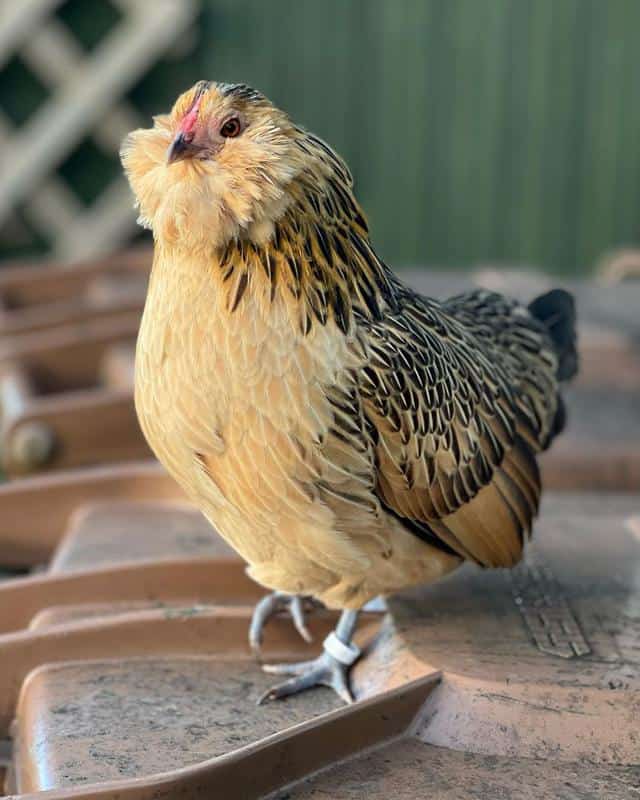
- Weight: 1.5 pounds
- Height: 8 to 14 inches
- Eggs per year: 160
If you come across the name “Barbu d’Anvers”, that’s not a different chicken breed. It’s the same as “Belgian d’Anvers”, only that the American Poultry Association (APA) prefers to use the latter while the British Belgian Bantam Club formally uses the former.
This breed is one of the true Bantams on the list and weighs up to 1.5 pounds if a rooster and 1.3 pounds if a hen. The height range runs from 8 to 14 inches, again roosters leaning more on the upper end of the spectrum.
The breed has up to 14 APA-recognized colors, from splash and blue to Colombian, mottled, and cuckoo.
Off looks, this bird breed has much to offer just as much as they do color varieties. For instance, it’s a seasoned egg layer that can give you up to 3 layers a week. That’s an egg every 2 days or so, which by the way, is one of the best yields you can get from Bantams.
9. Nankin Bantams
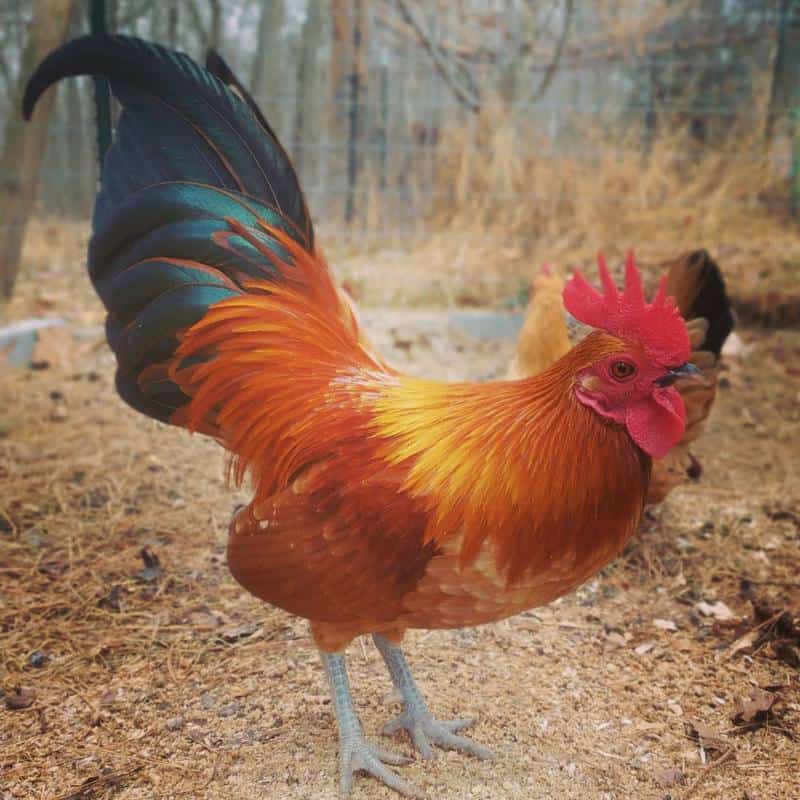
- Weight: 1.5 pounds
- Height: 8 to 14 inches
- Eggs per year: 100
Next up on our list is Nankin Bantam. It’s a true bantam that only comes in black-tailed red color.
This breed is one of the most docile and trainable kinds that you can use to train your kids on proper chicken handling. It also doesn’t require much care, so go for it if you’re just beginning your journey on poultry and don’t have the knowledge and skills to handle more delicate breeds.
On their egg production, I won’t say it’s the most productive bird breed. But 100 eggs per year is still an impressive number especially for a bird that’s developed to serve as more of a pet than egg producer.
10. Rosecomb Bantams
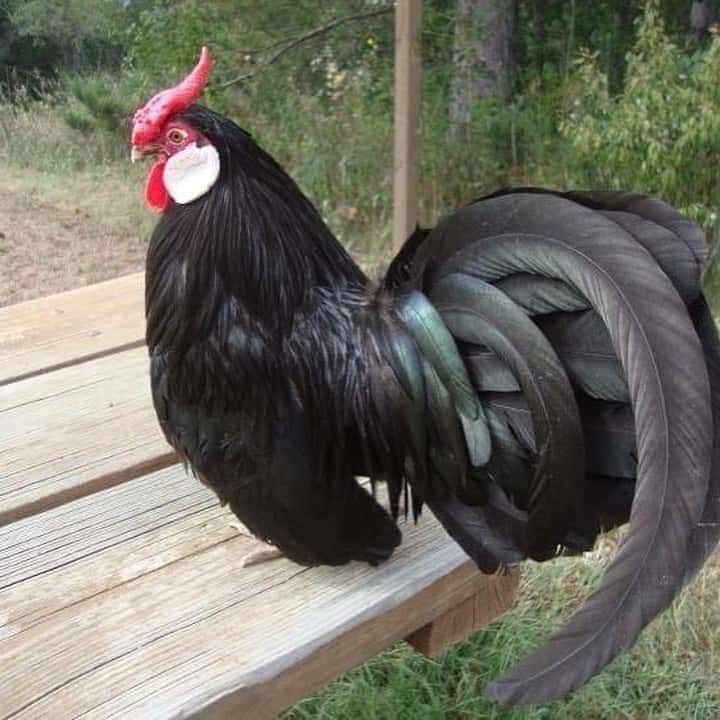
- Maximum weight: 1.6 pounds
- Height: 8 to 14 inches
- Eggs per year: 50
As one of our hand-picked smallest chicken breeds, Rosecomb chickens are generally much smaller than the average breeds kept in backyards. Their height is usually less than 14 inches, whereas the maximum weight is about 1.6 pounds.
With this chicken variety, you can expect about 50 eggs per year. Of course, the size of the eggs is small and reflects their body size, so don’t get surprised if they appear smaller than what your eyes are used to seeing.
On temperament, Rosecombs are friendly, but they often try hard to ensure that no one trivializes them on the basis of their smaller size. So, they can sometimes show aggression, especially when not treated right.
Plus, they can get flighty sometimes, so have that in mind before getting one.
Other than that, Rosecombs make an adorable breed for those who don’t have the resources to parent the larger chicken breeds.
11. Cubalaya Bantams
- Weight: 1.6 pounds
- Height: 8 to 14 inches
- Eggs per year: 250
Although they aren’t a true Bantam, miniature-sized Cubalayas are a joy to have. They are a well-mannered breed developed from merging Cuban, Filipino, and European chicken bloodlines.
The breed has three recognized color varieties; white, black, and black-breasted red, but they also have other color varieties, especially for roosters.
The male Cubalayas have the glamorous “lobster tail”, which basically is a visual effect created by their long downward-angling tail feathers. Their feathers are usually shiny and generally beautiful, and that makes this miniature breed one of the cutest small chicken breeds.
But beauty isn’t all Cubalaya bantams have – you’re looking at a triple-purpose chicken breed here. That’s to say; they are just as good at laying eggs and for the table as for showing purposes.
12. Belgian Bearded d’Uccle
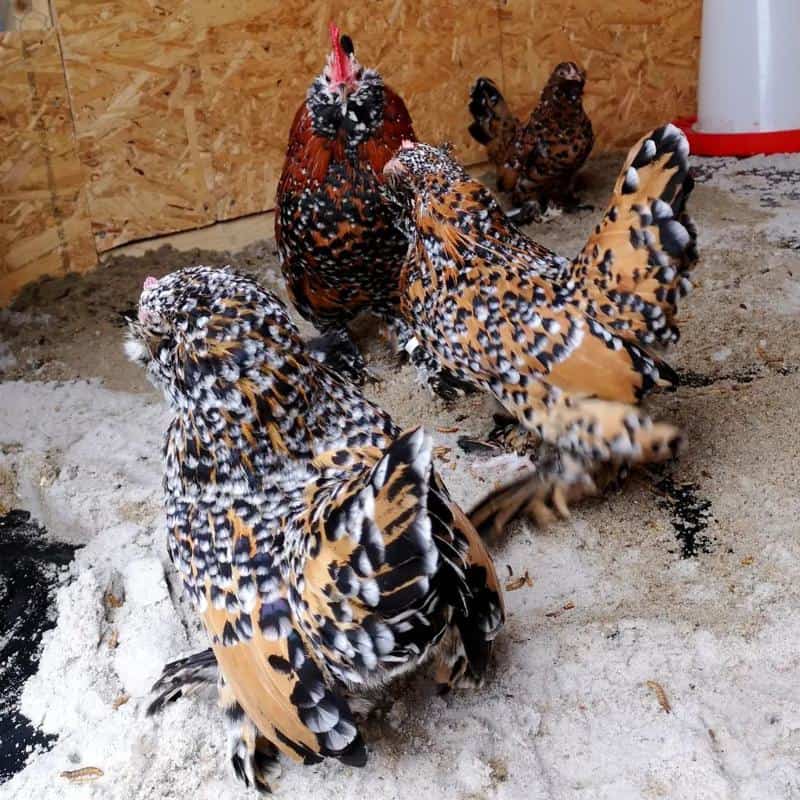
- Weight: 1.3 to 1.63 pounds
- Height: 9 to 14 inches
- Eggs per year: 100
The Belgian Bearded d’Uccle (pronounced as dew-clay) chicken breed is of Belgium origin and is only available in pint-sized versions. The roosters will reach up to 1.65 pounds while the hens grow up to 1.3 pounds.
Although tiny, this chicken breed has a huge personality. They’re highly affectionate and will be ready to befriend you right from day one.
But they’re also curious, which may often drive them to danger, especially if you’re living in areas with a large population of chicken predators.
The chickens have multiple plumage colors, but mille fleur is the most dominant. Other plumage colors include white, black, porcelain, self-blue, golden neck, and mottled – and that’s a total of 7 recognized colors.
13. Sapleboot Chickens
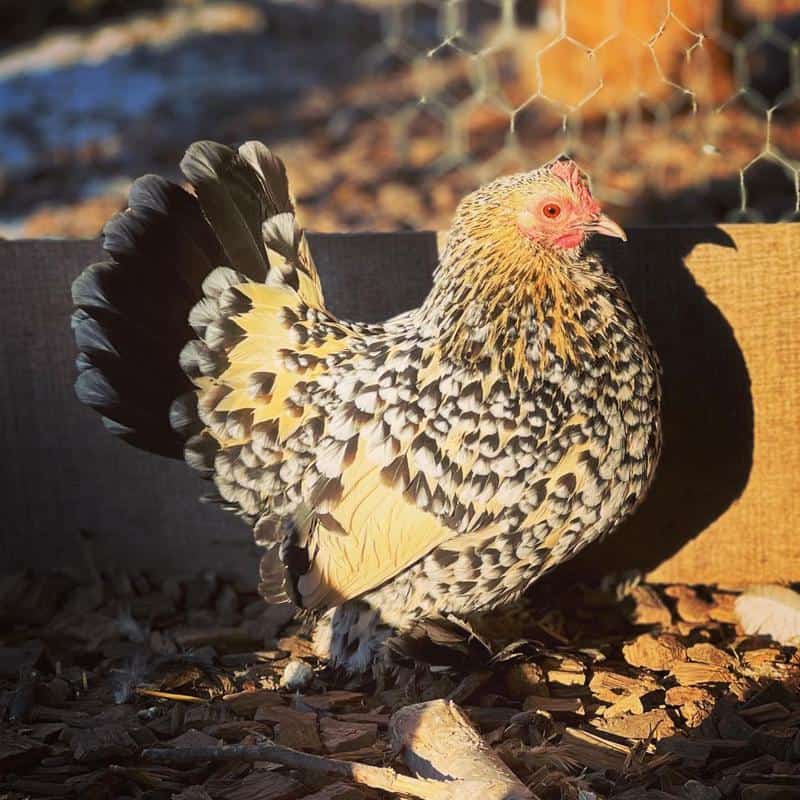
- Weight: 1.6 to 1.85 pounds
- Height: 10 to 16 inches
- Eggs per year: 180 eggs
Sapleboot chickens are also known as Booted Bantams or Dutch Booted Bantams. And did you notice that all the three names have the word “boot” in them?
That’s because these true bantams have feathers covering their feet, making them look like they’re in boots.
The weightiest Sapleboot chicken weighs slightly less than 2 pounds, way below the average chicken. Even more, they’re on the higher end of the egg production spectrum as they can rack up an astounding 180 eggs in one year.
But before getting them for their egg-laying prowess, remember that their sizes are slightly smaller than the average egg you’re used to buying from the store. Plus, these docile and gentle birds aren’t as weather-resistant and need more tender love and care than most smaller chicken breeds.
14. Silkie Bantam
- Weight: 1.5 to 2.25 pounds
- Height: 8 to 14 inches
- Eggs per year: 120
Could you be looking for a small chicken breed that looks unique even from a distance? If yes, then you might want to consider getting the Silkie Bantam.
Unlike most other smaller chicken breeds whose bodies are covered with normal feathers, Silkie Bantams have a fur-like covering – and that’s why they’re called “Silkies” in the first place.
The unusual look is from the fact that their feathers lack Barcibels, an essential component that keeps a bird’s feathers organized. Without Barcibels, a bird’s feathers will appear unattached and fluffy, just like Silkie Bantams.
Don’t worry, though; the absence of Barcibels doesn’t impact your bird’s general health in any way. In fact, it’s considered a “fortunate absence” as it gives them a cute look that helps them stand out from other chickens.
However, one thing you shouldn’t ignore is that their fur doesn’t repel water as perfectly as feathers do. Hence, keep your Silkie companion away from wet environments to avoid having them getting soaked and chilled.
Outside looks and all that, Silkie Bantam is a docile bird breed that’s also highly affectionate. It makes great lap birds for the little members of the family and won’t mind spending a few hours on their laps every day.
They’re also good layers with a maximum yield of 120 eggs annually. Even more, they make wonderful mothers and are selfless enough to sit on eggs that are not theirs. But they aren’t ideal for meat, even though they’re a sought-after delicacy in Asian countries.
15. Brahma Bantam
- Weight: 2.1 to 2.3 pounds
- Height: Unavailable
- Eggs per year: 150
If you typed “the largest chicken breeds” on your browser, there’s no doubt that Brahmas would dominate your search results as one of the giant breeds. But did you know we still have a petite version of this breed – what we’re now calling Brahma Bantam?
Well, if you didn’t, now you do!
They aren’t the smallest Bantams, though, as they can hit a maximum weight of 2.3 pounds – so far the largest figure on our list. But that’s for roosters, as the female can weigh about 2.1 pounds.
Here, you can expect about 150 eggs per year. That’s a good output, and the fact that the breed is also a perfect bird for the dinner table gives you another reason to make it part of your backyard flock.
But before you do so, remember that the roosters can sometimes behave aggressively towards other flock members. It doesn’t happen with all birds, though; some befriend other chickens just as much as they do their human companions.
A Comparison Table for The Best Small Chicken Breeds
To make it even easier for you to pick out the perfect small chicken breed for your needs, we’ve summarized everything we’ve discussed in the table below;
| Rank | Chicken Breed | Maximum Weight | Maximum Height | Recognized Color Varieties | Max Eggs Per Pear |
| 1 | Serama Bantams | 1.2 pounds | 10 inches | White (most popular), brown, and more | 200 |
| 2 | Japanese Bantams | 1.25 pounds | 12 inches | Black-tailed and white | 60 |
| 3 | Dutch Bantams | 1.25 pounds | 14 inches | Black, silver, light brown, blue-cream light brown, blue light brown, and cream light brown. | 100 |
| 4 | Sebright Chickens | 1.35 pounds | 14 inches | Gold-laced and silver-laced | 160 |
| 5 | Marans Bantams | 1.5 pounds | 12 inches | Black, black copper, and more. | 270 |
| 6 | Sultan Bantams | 1.5 pounds | 16 inches | White | 60 |
| 7 | Cochin Bantams | 1.5 pounds | Unavailable | Barred, white, buff, mottled, golden laced, black, and red. | 160 |
| 8 | Belgian d’Anvers Chickens | 1.5 pounds | 14 inches | Colombian, mottled, porcelain, blue quail, blue, white, mille fleur, black, splash, buff, quail, self-blue, Buff Colombian, and cuckoo | 160 |
| 9 | Nankin Bantams | 1.5 pounds | 16 inches | Red with black tail | 100 |
| 10 | Rosecomb Bantams | 1.6 pounds | 14 inches | Black, white, and blue | 50 |
| 11 | Cubalaya Bantams | 1.6 pounds | 14 inches | White, black, and black-breasted red | 250 |
| 12 | Belgian Bearded d’Uccle | 1.63 pounds | 14 inches | Mille fleur, white, black, porcelain, self-blue, golden neck, and mottled | 100 |
| 13 | Sapleboot Chickens | 1.85 pounds | 16 inches | “Barred, black, blue, buff, cuckoo, Columbian, gray, golden neck, mille fleur, mottled, etc. | 180 |
| 14 | Silkie Bantams | 2.25 pounds | 14 inches | Gray, white, brown, blue | 120 |
| 15 | Brahma Bantams | 2.3 pounds | Unavailable | Buff, light, and dark | 150 |
Also Read: Largest Chicken Breeds
Conclusion
Small chicken breeds are a clever way to enjoy all the joys of chicken parenting when simultaneously eluding the overwhelming demands of larger breeds. Most of the tiny breeds are friendly, but it’s important that you examine the temperament of your target breed before making the final buying decision.
Don’t expect most of these breeds to do well as meat producers, but most of them are excellent egg layers, although their eggs are typically smaller than that of larger counterparts.
Lastly, beware that with their smaller bodies, most of these birds have the agility it takes to maneuver in the air.
